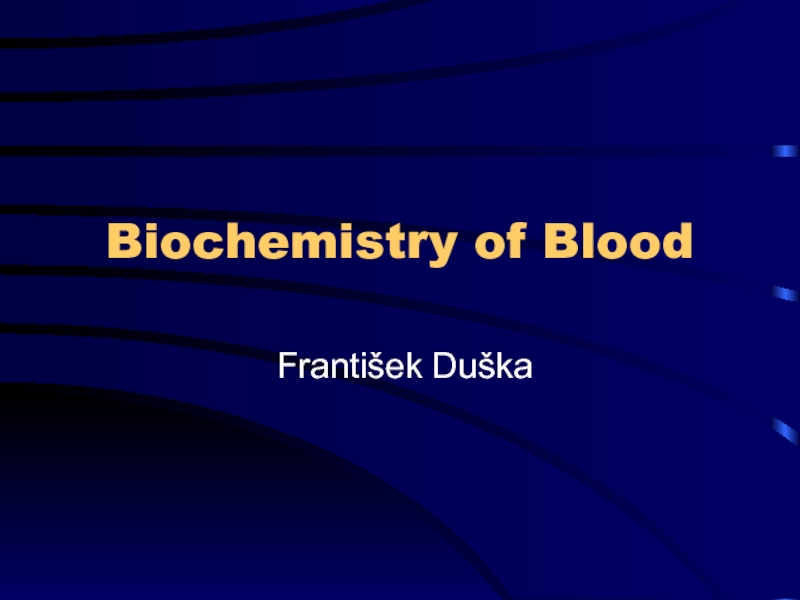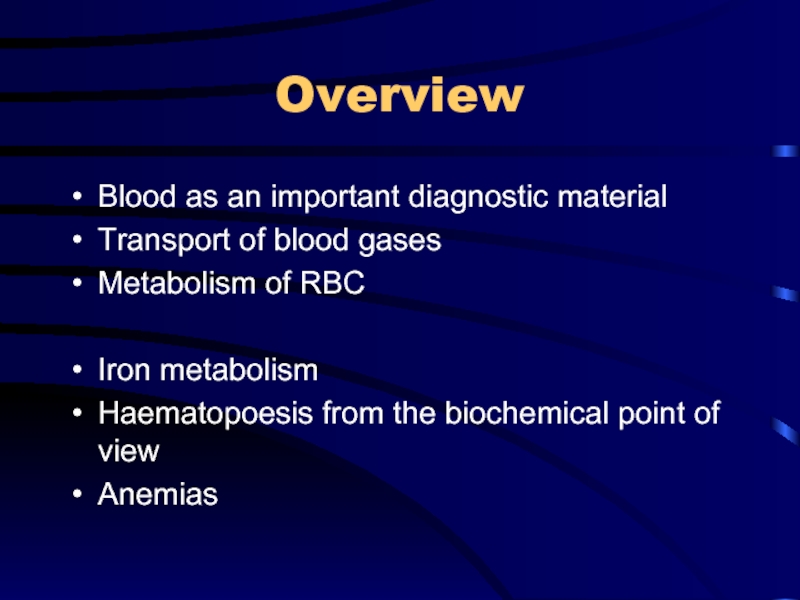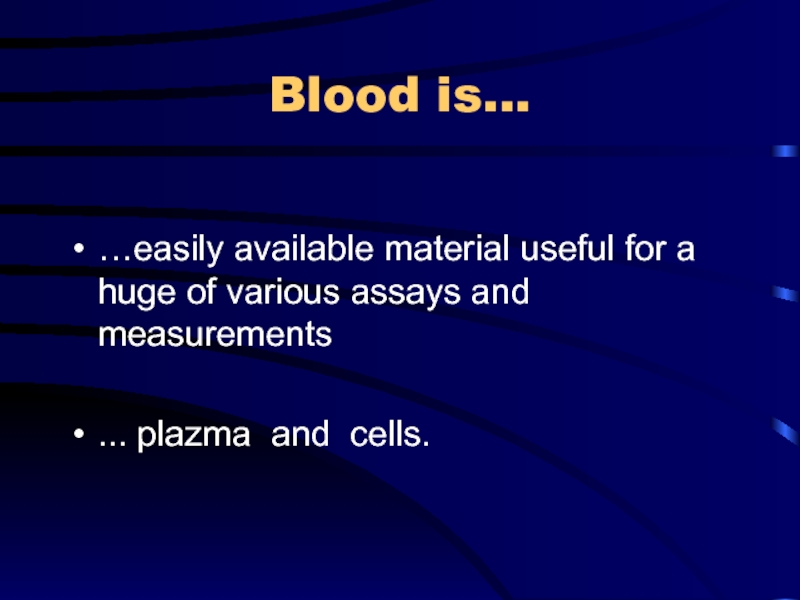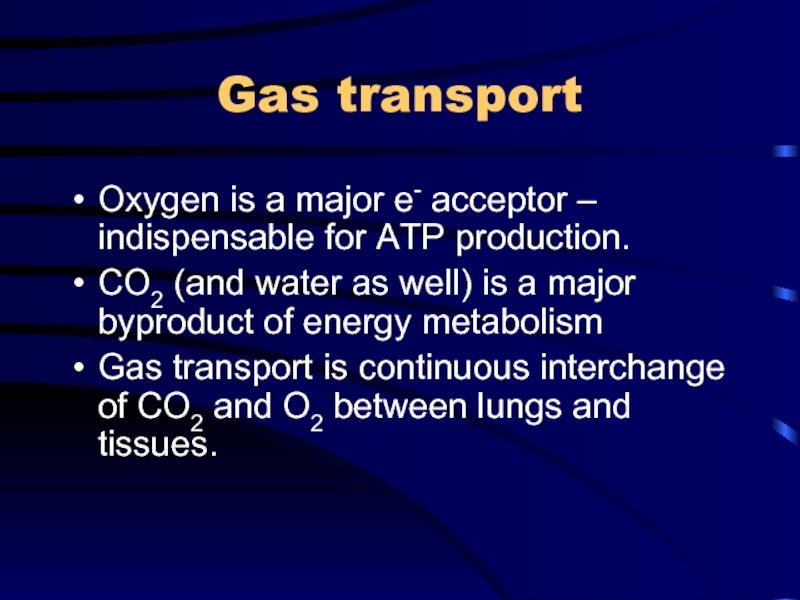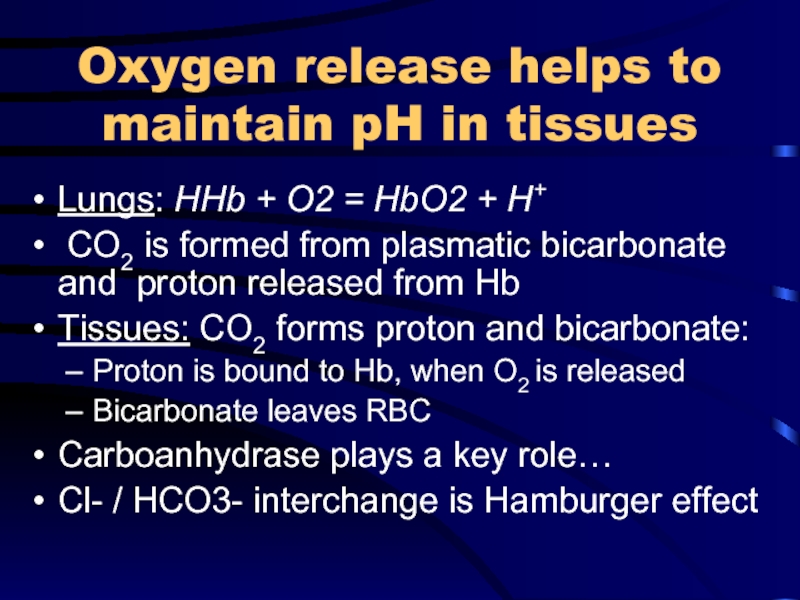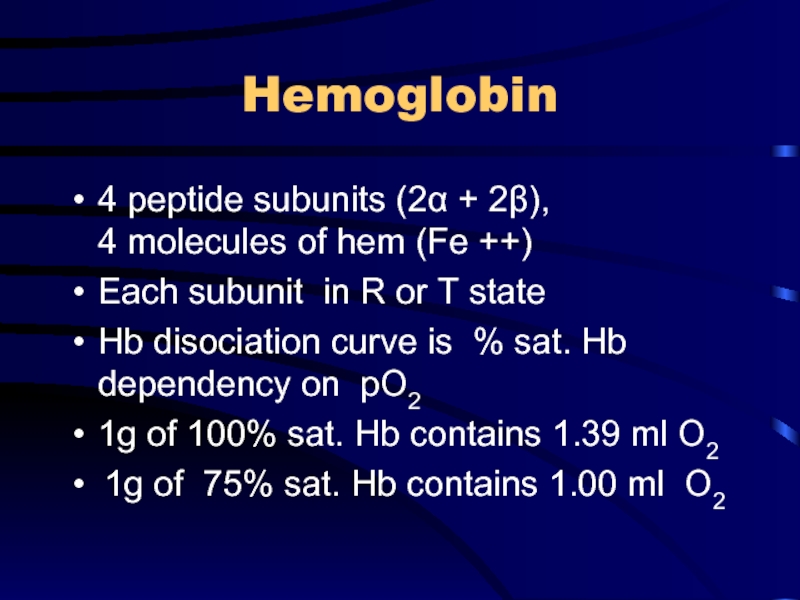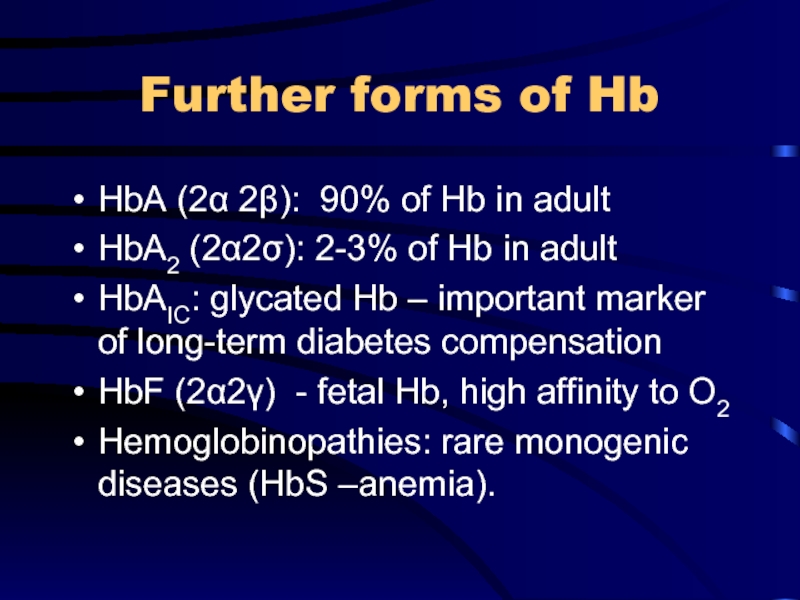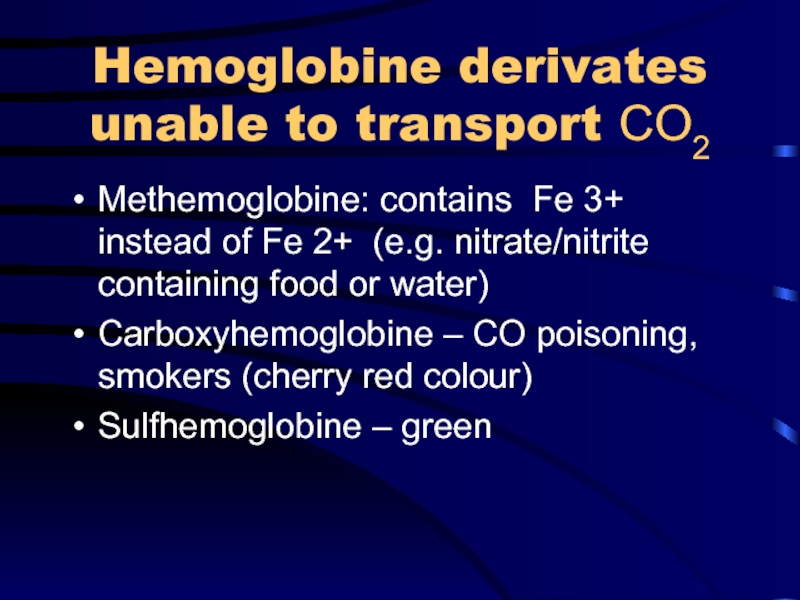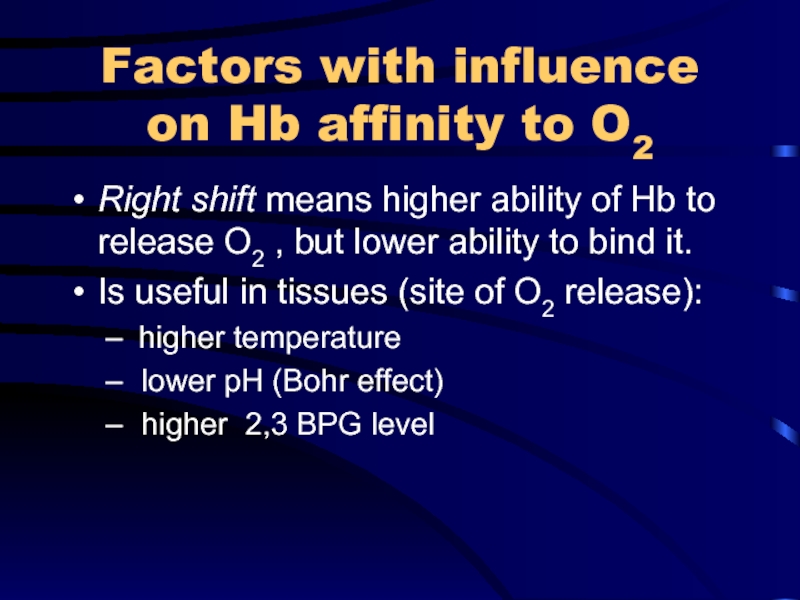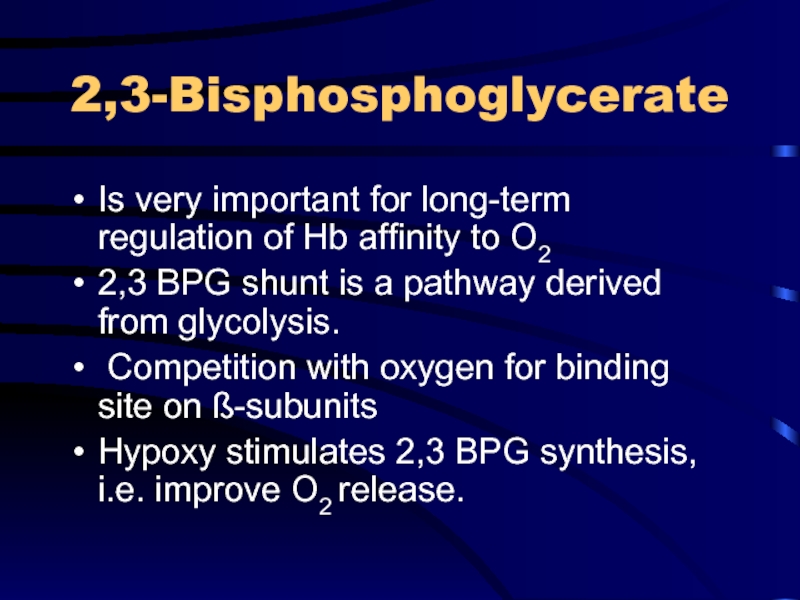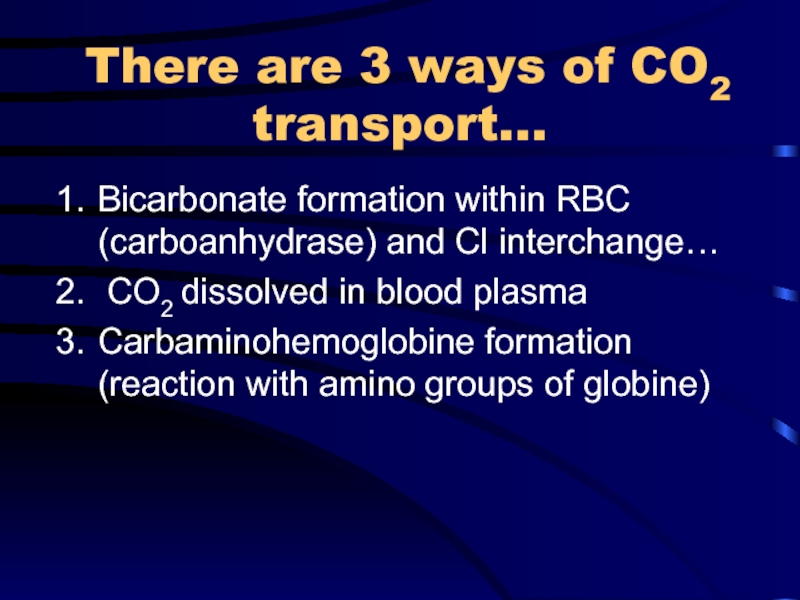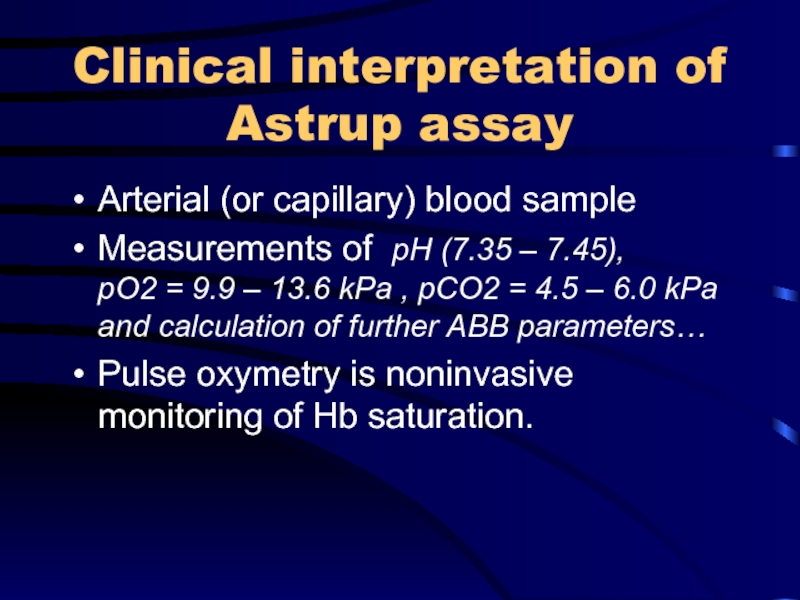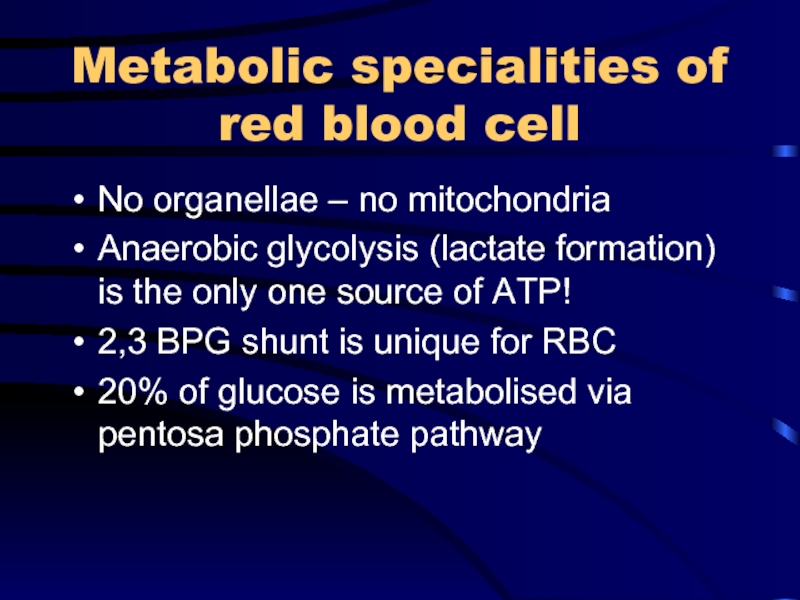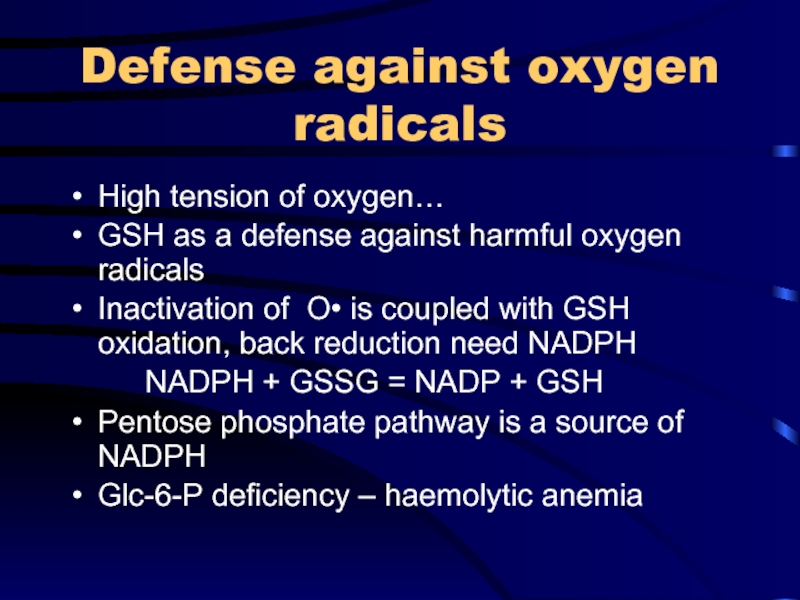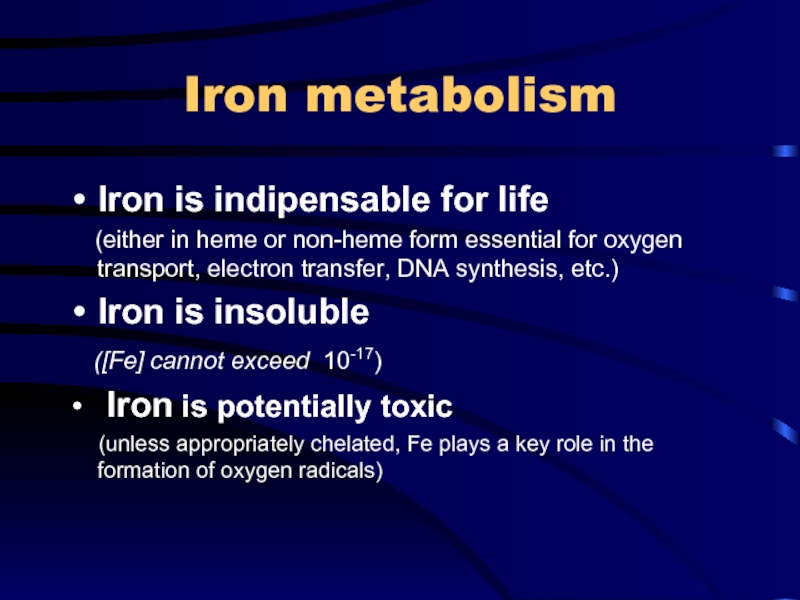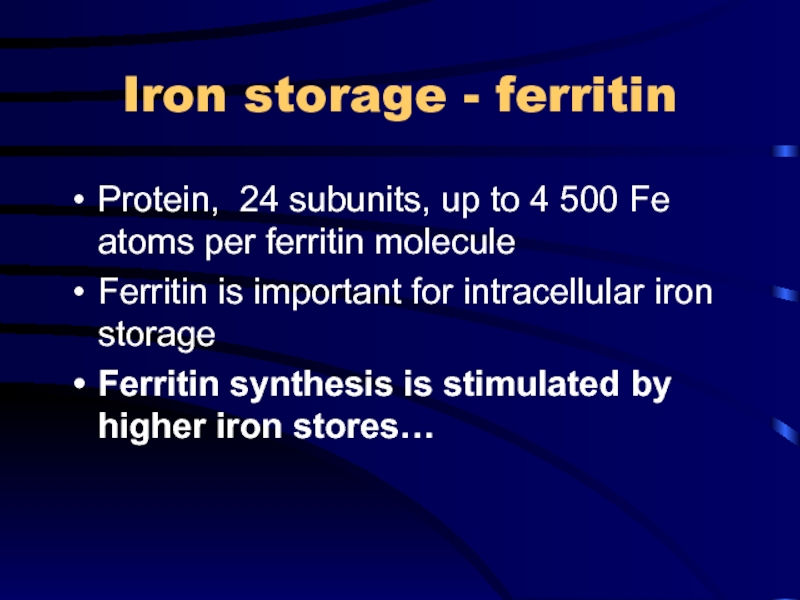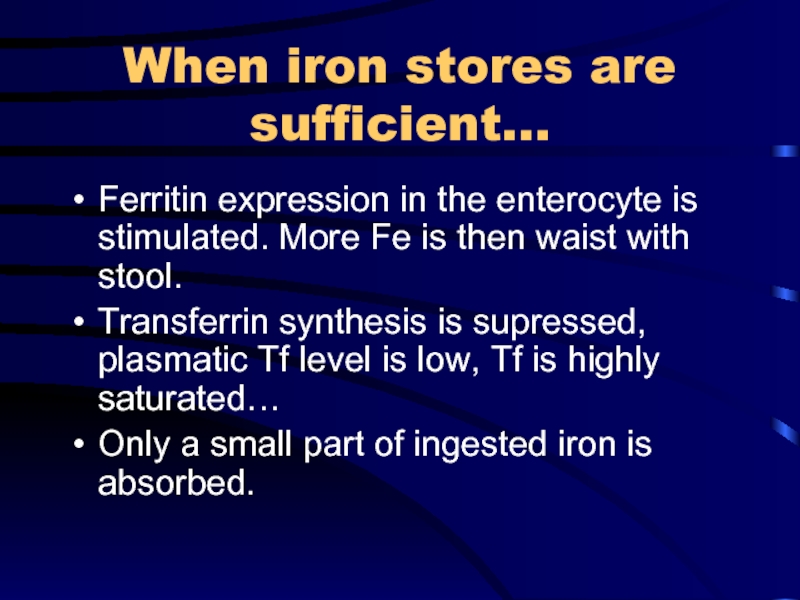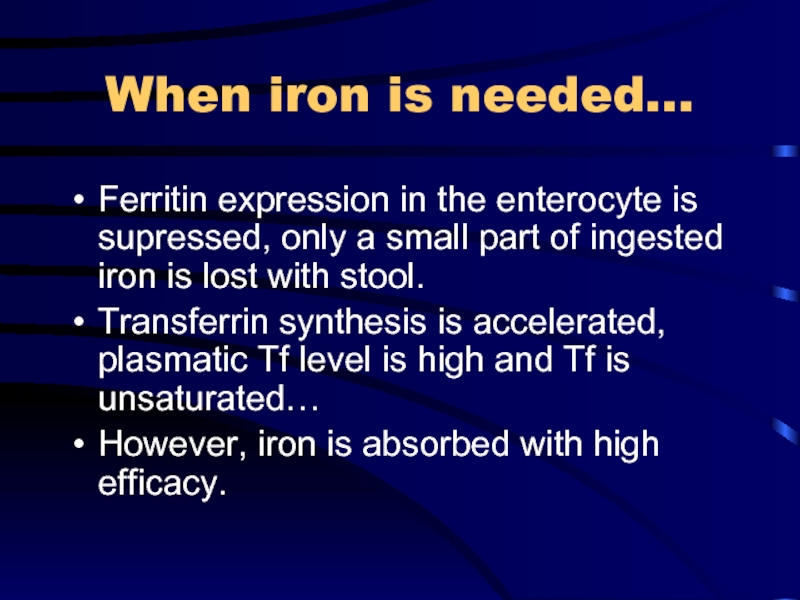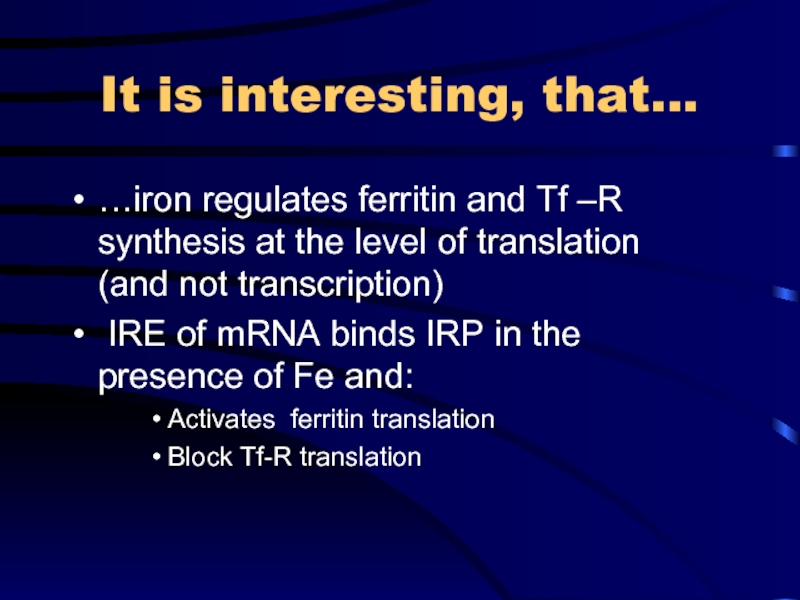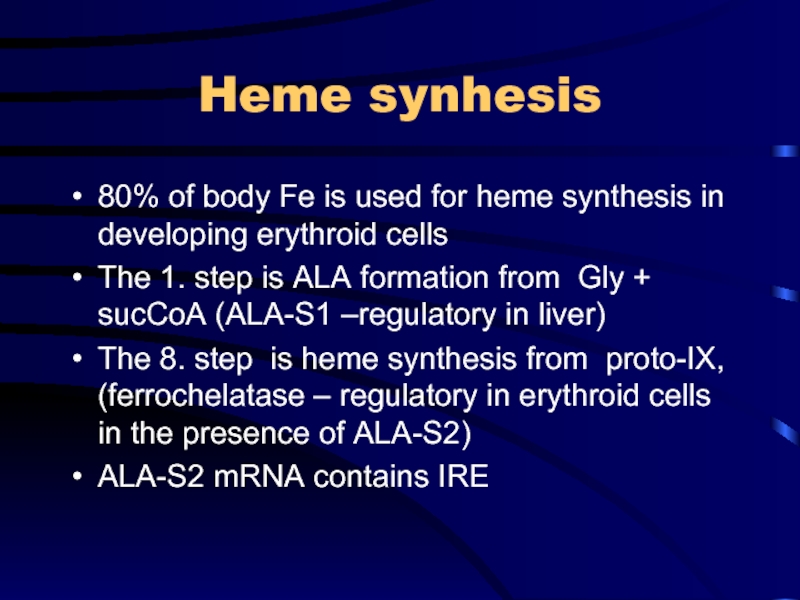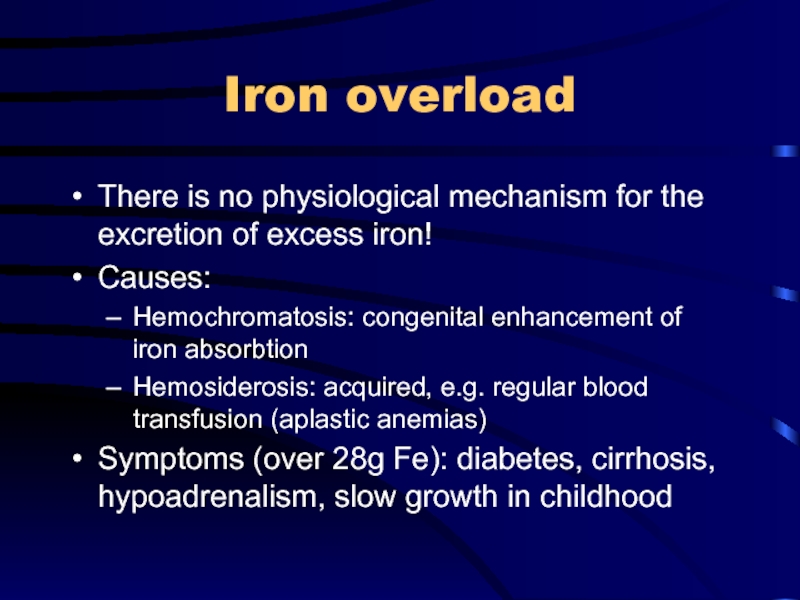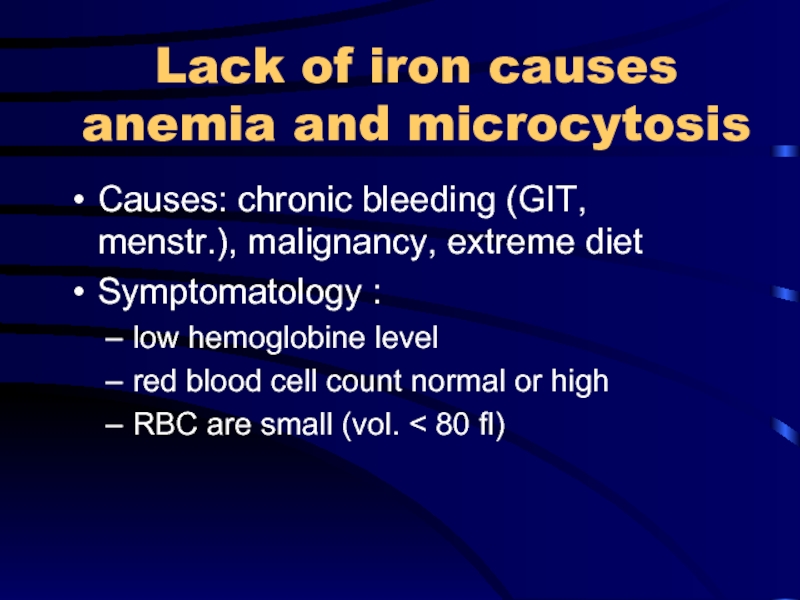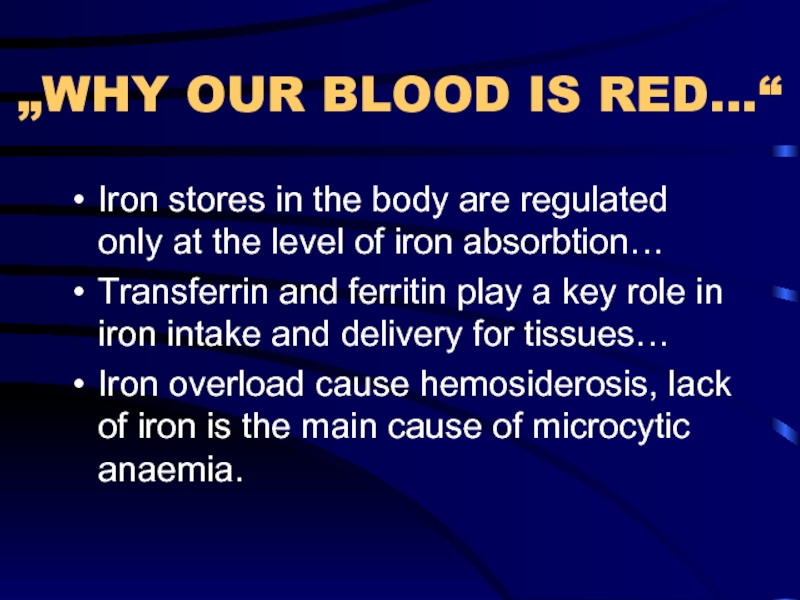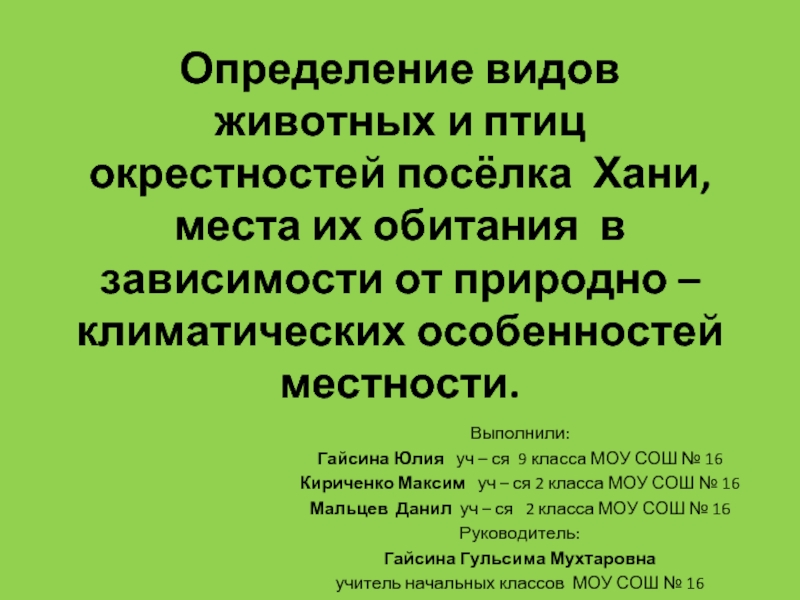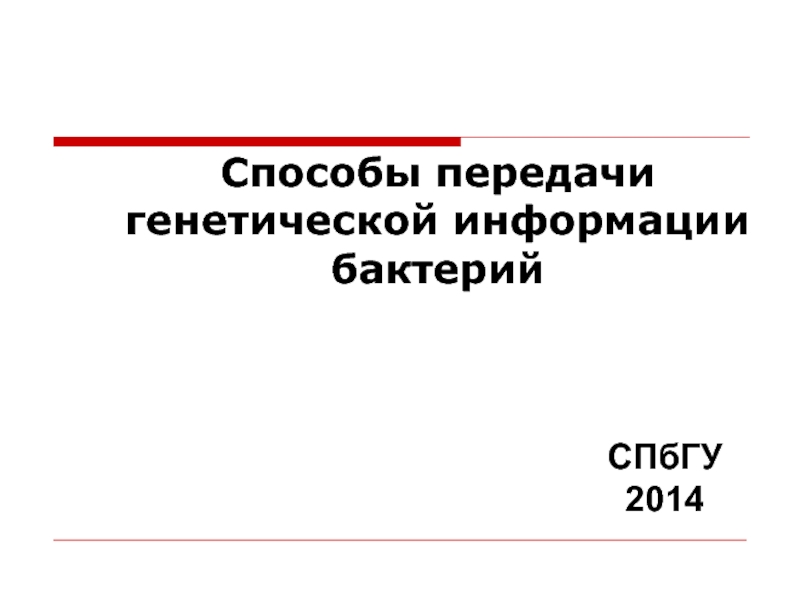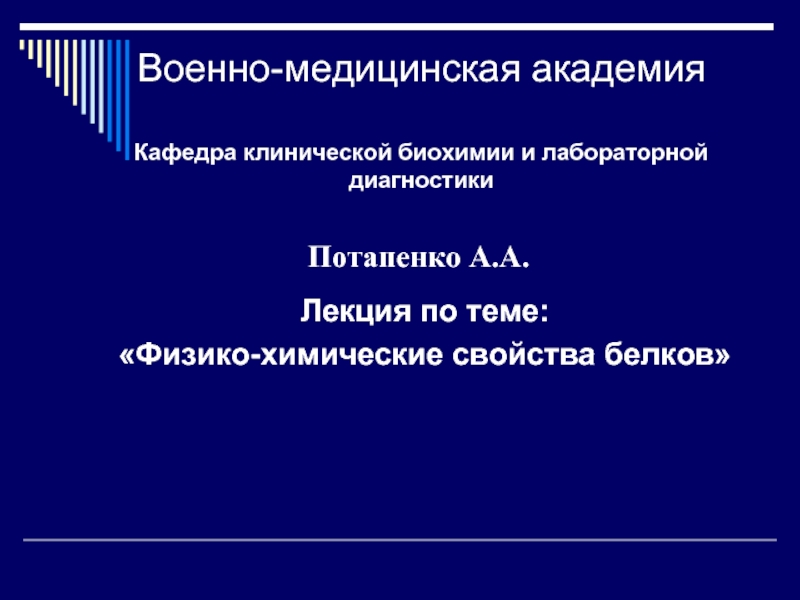- Главная
- Разное
- Дизайн
- Бизнес и предпринимательство
- Аналитика
- Образование
- Развлечения
- Красота и здоровье
- Финансы
- Государство
- Путешествия
- Спорт
- Недвижимость
- Армия
- Графика
- Культурология
- Еда и кулинария
- Лингвистика
- Английский язык
- Астрономия
- Алгебра
- Биология
- География
- Детские презентации
- Информатика
- История
- Литература
- Маркетинг
- Математика
- Медицина
- Менеджмент
- Музыка
- МХК
- Немецкий язык
- ОБЖ
- Обществознание
- Окружающий мир
- Педагогика
- Русский язык
- Технология
- Физика
- Философия
- Химия
- Шаблоны, картинки для презентаций
- Экология
- Экономика
- Юриспруденция
Biochemistry of Blood презентация
Содержание
- 1. Biochemistry of Blood
- 2. Overview Blood as an important diagnostic material
- 3. Blood is… …easily available material useful
- 4. Gas transport Oxygen is a major
- 5. Oxygen release helps to maintain pH in
- 6. Hemoglobin 4 peptide subunits (2α + 2β),
- 7. Further forms of Hb HbA (2α 2β):
- 8. Hemoglobine derivates unable to transport CO2 Methemoglobine:
- 9. Factors with influence on Hb affinity to
- 10. 2,3-Bisphosphoglycerate Is very important for long-term regulation
- 11. There are 3 ways of CO2
- 12. Clinical interpretation of Astrup assay Arterial (or
- 13. Metabolic specialities of red blood cell No
- 14. Defense against oxygen radicals High tension of
- 15. Coffee break
- 16. Iron metabolism Iron is indipensable for life
- 17. Iron storage - ferritin Protein, 24 subunits,
- 18. Transferrin (Tf) transports Fe in plasma Glycoprotein
- 19. When iron stores are sufficient… Ferritin expression
- 20. When iron is needed… Ferritin expression in
- 21. It is interesting, that… …iron regulates ferritin
- 22. Heme synhesis 80% of body Fe
- 23. Iron overload There is no physiological mechanism
- 24. Lack of iron causes anemia and microcytosis
- 25. „WHY OUR BLOOD IS RED…“ Iron stores
- 26. Questions…?
Слайд 2Overview
Blood as an important diagnostic material
Transport of blood gases
Metabolism of RBC
Iron
metabolism
Haematopoesis from the biochemical point of view
Anemias
Haematopoesis from the biochemical point of view
Anemias
Слайд 3Blood is…
…easily available material useful for a huge of various assays
and measurements
... plazma and cells.
... plazma and cells.
Слайд 4Gas transport
Oxygen is a major e- acceptor – indispensable for
ATP production.
CO2 (and water as well) is a major byproduct of energy metabolism
Gas transport is continuous interchange of CO2 and O2 between lungs and tissues.
CO2 (and water as well) is a major byproduct of energy metabolism
Gas transport is continuous interchange of CO2 and O2 between lungs and tissues.
Слайд 5Oxygen release helps to maintain pH in tissues
Lungs: HHb +
O2 = HbO2 + H+
CO2 is formed from plasmatic bicarbonate and proton released from Hb
Tissues: CO2 forms proton and bicarbonate:
Proton is bound to Hb, when O2 is released
Bicarbonate leaves RBC
Carboanhydrase plays a key role…
Cl- / HCO3- interchange is Hamburger effect
CO2 is formed from plasmatic bicarbonate and proton released from Hb
Tissues: CO2 forms proton and bicarbonate:
Proton is bound to Hb, when O2 is released
Bicarbonate leaves RBC
Carboanhydrase plays a key role…
Cl- / HCO3- interchange is Hamburger effect
Слайд 6Hemoglobin
4 peptide subunits (2α + 2β),
4 molecules of hem (Fe ++)
Each subunit in R or T state
Hb disociation curve is % sat. Hb dependency on pO2
1g of 100% sat. Hb contains 1.39 ml O2
1g of 75% sat. Hb contains 1.00 ml O2
Each subunit in R or T state
Hb disociation curve is % sat. Hb dependency on pO2
1g of 100% sat. Hb contains 1.39 ml O2
1g of 75% sat. Hb contains 1.00 ml O2
Слайд 7Further forms of Hb
HbA (2α 2β): 90% of Hb in adult
HbA2
(2α2σ): 2-3% of Hb in adult
HbAIC: glycated Hb – important marker of long-term diabetes compensation
HbF (2α2γ) - fetal Hb, high affinity to O2
Hemoglobinopathies: rare monogenic diseases (HbS –anemia).
HbAIC: glycated Hb – important marker of long-term diabetes compensation
HbF (2α2γ) - fetal Hb, high affinity to O2
Hemoglobinopathies: rare monogenic diseases (HbS –anemia).
Слайд 8Hemoglobine derivates unable to transport CO2
Methemoglobine: contains Fe 3+ instead of
Fe 2+ (e.g. nitrate/nitrite containing food or water)
Carboxyhemoglobine – CO poisoning, smokers (cherry red colour)
Sulfhemoglobine – green
Carboxyhemoglobine – CO poisoning, smokers (cherry red colour)
Sulfhemoglobine – green
Слайд 9Factors with influence on Hb affinity to O2
Right shift means higher
ability of Hb to release O2 , but lower ability to bind it.
Is useful in tissues (site of O2 release):
higher temperature
lower pH (Bohr effect)
higher 2,3 BPG level
Is useful in tissues (site of O2 release):
higher temperature
lower pH (Bohr effect)
higher 2,3 BPG level
Слайд 102,3-Bisphosphoglycerate
Is very important for long-term regulation of Hb affinity to O2
2,3
BPG shunt is a pathway derived from glycolysis.
Competition with oxygen for binding site on ß-subunits
Hypoxy stimulates 2,3 BPG synthesis, i.e. improve O2 release.
Competition with oxygen for binding site on ß-subunits
Hypoxy stimulates 2,3 BPG synthesis, i.e. improve O2 release.
Слайд 11 There are 3 ways of CO2 transport…
Bicarbonate formation within
RBC (carboanhydrase) and Cl interchange…
CO2 dissolved in blood plasma
Carbaminohemoglobine formation (reaction with amino groups of globine)
CO2 dissolved in blood plasma
Carbaminohemoglobine formation (reaction with amino groups of globine)
Слайд 12Clinical interpretation of Astrup assay
Arterial (or capillary) blood sample
Measurements of pH
(7.35 – 7.45), pO2 = 9.9 – 13.6 kPa , pCO2 = 4.5 – 6.0 kPa and calculation of further ABB parameters…
Pulse oxymetry is noninvasive monitoring of Hb saturation.
Pulse oxymetry is noninvasive monitoring of Hb saturation.
Слайд 13Metabolic specialities of red blood cell
No organellae – no mitochondria
Anaerobic glycolysis
(lactate formation) is the only one source of ATP!
2,3 BPG shunt is unique for RBC
20% of glucose is metabolised via pentosa phosphate pathway
2,3 BPG shunt is unique for RBC
20% of glucose is metabolised via pentosa phosphate pathway
Слайд 14Defense against oxygen radicals
High tension of oxygen…
GSH as a defense
against harmful oxygen radicals
Inactivation of O• is coupled with GSH oxidation, back reduction need NADPH
NADPH + GSSG = NADP + GSH
Pentose phosphate pathway is a source of NADPH
Glc-6-P deficiency – haemolytic anemia
Inactivation of O• is coupled with GSH oxidation, back reduction need NADPH
NADPH + GSSG = NADP + GSH
Pentose phosphate pathway is a source of NADPH
Glc-6-P deficiency – haemolytic anemia
Слайд 16Iron metabolism
Iron is indipensable for life
(either in heme or
non-heme form essential for oxygen transport, electron transfer, DNA synthesis, etc.)
Iron is insoluble
([Fe] cannot exceed 10-17)
Iron is potentially toxic
(unless appropriately chelated, Fe plays a key role in the formation of oxygen radicals)
Iron is insoluble
([Fe] cannot exceed 10-17)
Iron is potentially toxic
(unless appropriately chelated, Fe plays a key role in the formation of oxygen radicals)
Слайд 17Iron storage - ferritin
Protein, 24 subunits, up to 4 500 Fe
atoms per ferritin molecule
Ferritin is important for intracellular iron storage
Ferritin synthesis is stimulated by higher iron stores…
Ferritin is important for intracellular iron storage
Ferritin synthesis is stimulated by higher iron stores…
Слайд 18Transferrin (Tf) transports Fe in plasma
Glycoprotein with 2 high affinity binding
sites for Fe3+
Tf transports Fe between sites of absorption, storage and utilization
Cells (esp. Erythroid precursors) strip Fe from Tf by expressing Tf-R
Tf synthesis is stimulated by lack of Fe in the body.
Tf transports Fe between sites of absorption, storage and utilization
Cells (esp. Erythroid precursors) strip Fe from Tf by expressing Tf-R
Tf synthesis is stimulated by lack of Fe in the body.
Слайд 19When iron stores are sufficient…
Ferritin expression in the enterocyte is stimulated.
More Fe is then waist with stool.
Transferrin synthesis is supressed, plasmatic Tf level is low, Tf is highly saturated…
Only a small part of ingested iron is absorbed.
Transferrin synthesis is supressed, plasmatic Tf level is low, Tf is highly saturated…
Only a small part of ingested iron is absorbed.
Слайд 20When iron is needed…
Ferritin expression in the enterocyte is supressed, only
a small part of ingested iron is lost with stool.
Transferrin synthesis is accelerated, plasmatic Tf level is high and Tf is unsaturated…
However, iron is absorbed with high efficacy.
Transferrin synthesis is accelerated, plasmatic Tf level is high and Tf is unsaturated…
However, iron is absorbed with high efficacy.
Слайд 21It is interesting, that…
…iron regulates ferritin and Tf –R synthesis at
the level of translation (and not transcription)
IRE of mRNA binds IRP in the presence of Fe and:
Activates ferritin translation
Block Tf-R translation
IRE of mRNA binds IRP in the presence of Fe and:
Activates ferritin translation
Block Tf-R translation
Слайд 22Heme synhesis
80% of body Fe is used for heme synthesis
in developing erythroid cells
The 1. step is ALA formation from Gly + sucCoA (ALA-S1 –regulatory in liver)
The 8. step is heme synthesis from proto-IX, (ferrochelatase – regulatory in erythroid cells in the presence of ALA-S2)
ALA-S2 mRNA contains IRE
The 1. step is ALA formation from Gly + sucCoA (ALA-S1 –regulatory in liver)
The 8. step is heme synthesis from proto-IX, (ferrochelatase – regulatory in erythroid cells in the presence of ALA-S2)
ALA-S2 mRNA contains IRE
Слайд 23Iron overload
There is no physiological mechanism for the excretion of excess
iron!
Causes:
Hemochromatosis: congenital enhancement of iron absorbtion
Hemosiderosis: acquired, e.g. regular blood transfusion (aplastic anemias)
Symptoms (over 28g Fe): diabetes, cirrhosis, hypoadrenalism, slow growth in childhood
Causes:
Hemochromatosis: congenital enhancement of iron absorbtion
Hemosiderosis: acquired, e.g. regular blood transfusion (aplastic anemias)
Symptoms (over 28g Fe): diabetes, cirrhosis, hypoadrenalism, slow growth in childhood
Слайд 24Lack of iron causes anemia and microcytosis
Causes: chronic bleeding (GIT, menstr.),
malignancy, extreme diet
Symptomatology :
low hemoglobine level
red blood cell count normal or high
RBC are small (vol. < 80 fl)
Symptomatology :
low hemoglobine level
red blood cell count normal or high
RBC are small (vol. < 80 fl)
Слайд 25„WHY OUR BLOOD IS RED…“
Iron stores in the body are regulated
only at the level of iron absorbtion…
Transferrin and ferritin play a key role in iron intake and delivery for tissues…
Iron overload cause hemosiderosis, lack of iron is the main cause of microcytic anaemia.
Transferrin and ferritin play a key role in iron intake and delivery for tissues…
Iron overload cause hemosiderosis, lack of iron is the main cause of microcytic anaemia.
